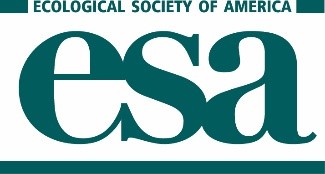ESA Data Access - Inclusive Pedagogy
Overview
|
This is a completed Faculty Mentoring Network (FMN). FMNs are sustained, immersive, community-based professional development opportunities for faculty. FMNs support the adaptation and implementation of materials and/or instructional approaches in their classrooms. Learn more about FMNs. Interested in upcoming FMN opportunities? Sign up for the QUBES Newsletter Browse products from this FMN Visit partner groups for full resource collections |
Goals
- Increase understanding and implementation of inclusive pedagogy in ecology classrooms
- Develop, implement, and assess effective materials and inclusive pedagogical practices for teaching data-intensive modules in the classroom
- Join a diverse community of practice in small group virtual meetings over a semester to exchange ideas, effective tips and strategies in lecture/classroom/lab
Mentors
- Jackie Matthes, Wellesley College
- Kaitlin Stack Whitney, Rochester Institute of Technology
- Teresa Mourad, Ecological Society of America
Final Products
Climate-Induced Shifts in California Butterflies
Version: 2.0
Investigating human impacts on stream ecology: locally and nationally
Version: 1.0 Adapted From: Investigating human impacts on stream ecology: locally and nationally v1.0
Understanding Global Climate Change: Present, Past, and Future
Version: 1.0 Adapted From: Global Temperature Change in the 21st Century (Abstract) | TIEE v1.0
Too much of a good thing? Exploring nutrient pollution in streams using bioindicators
Version: 1.0 Adapted From: Investigating human impacts on stream ecology: locally and nationally v1.0
Investigating human impacts on stream ecology: Scaling up from Local to National with a focus on the Southeast
Version: 1.0 Adapted From: Investigating human impacts on stream ecology: locally and nationally v1.0
Landscape Indicators:Nutrients and Macroinvertebrates
Version: 1.0 Adapted From: Investigating human impacts on stream ecology: locally and nationally v1.0
The Effect of Climate Change on Butterfly Phenology
Version: 1.0 Adapted From: The Effect of Climate Change on Butterfly Phenology v1.0
Introduction to Data Management, Life History, and Demography
Version: 1.0 Adapted From: Demography from physical cemeteries, "virtual cemeteries," and census data v1.0
Investigating human impacts on stream ecology: locally and nationally
Version: 1.0 Adapted From: Investigating human impacts on stream ecology: locally and nationally v1.0
Global Temperature Change in the 21st Century: An Introduction to Global Climate Models and Graphing in Excel (Adapted for Non-Majors)
Version: 1.0 Adapted From: Global Temperature Change in the 21st Century (Abstract) | TIEE v1.0
Data management and introduction to QGIS and RStudio for spatial analysis
Version: 1.0 Adapted From: Data Management using National Ecological Observatory Network's (NEON) Small Mammal Data with Accompanying Lesson on Mark Recapture Analysis v2.1
Investigating human impacts on stream ecology: locally and nationally
Version: 1.1 Adapted From: Investigating human impacts on stream ecology: locally and nationally v1.0
Demography from "virtual cemeteries"
Version: 1.1 Adapted From: Demography from physical cemeteries, "virtual cemeteries," and census data v1.0
A Tough Choice in Watershed Management
Version: 1.0 Adapted From: Investigating human impacts on stream ecology: locally and nationally v1.0

